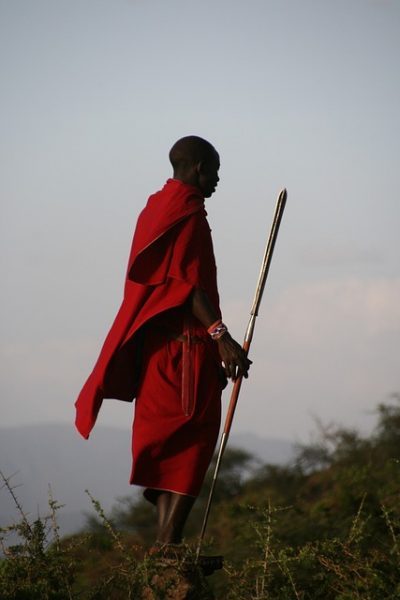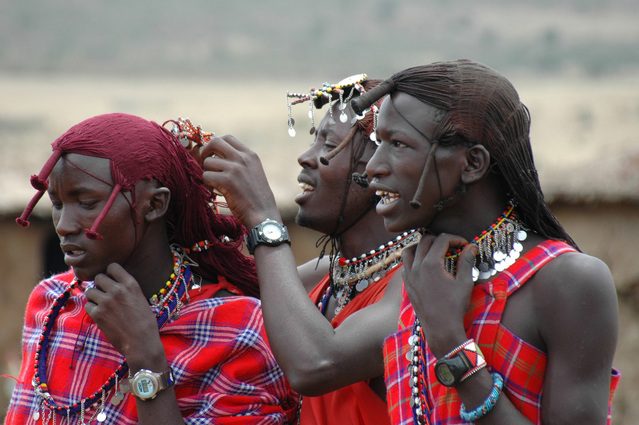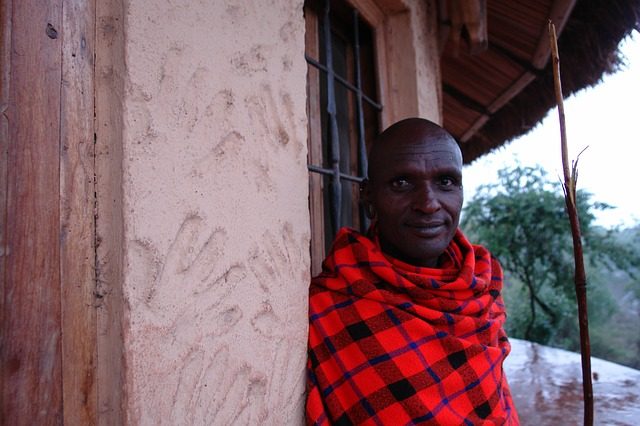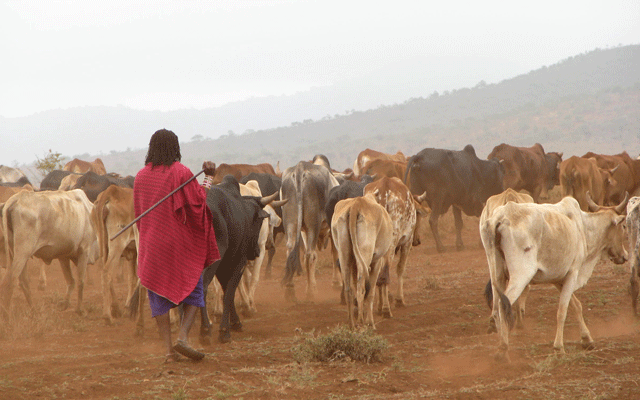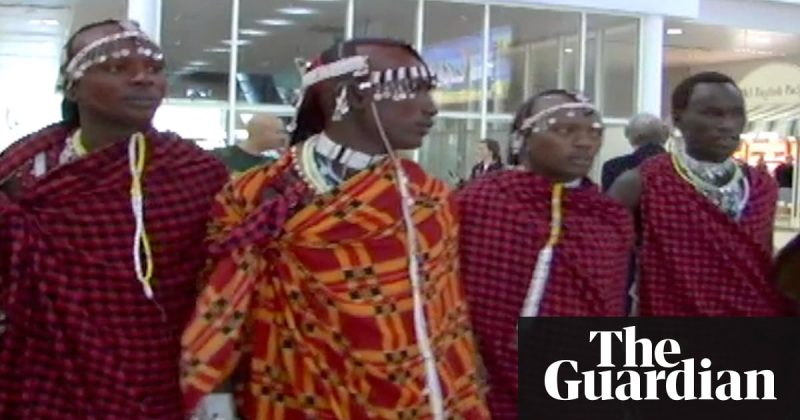Travel To Kenya To Know More About Maasais
History
Travel to Kenya to know more about Maasais. The western world talks about Maasais as a troop from Roman legionnaires. But M. Merker, a German scientist’s, theory as the lost tribe of Israel still floats in popular imagination. Similarly, W. J Perry in his book The children of the sun implies that he believes Maasais belong to the Semitic race. Their traditions in so many respects are like those of the Jews. Writers often describe Maasais tribe through their dressing and spiritualism.
Maasai Mara
You need to travel to Kenya to know more about Maasais. Maasai Mara comes from Maasais and the Mara river. Animals, cloud shadows and widely spaced thorn trees dot the grassland of Maasai Mara. It is a wildlife space covering 1,510sq.km that belongs to Maasais and protect wildlife from hunters. Maasai Mara has one of the highest number of lions in the world. Leopards and cheetahs are in plentiful too.
Population
Travel To Kenya To Know More About Maasais. Maasai population is around a million and a half. But many Maasais doubt this. They see census as government meddling. In Kenya, they are around 0.7% of the population. In Tanzania, there is no census based on ethnicity. So, it is difficult to gauge their numbers there.
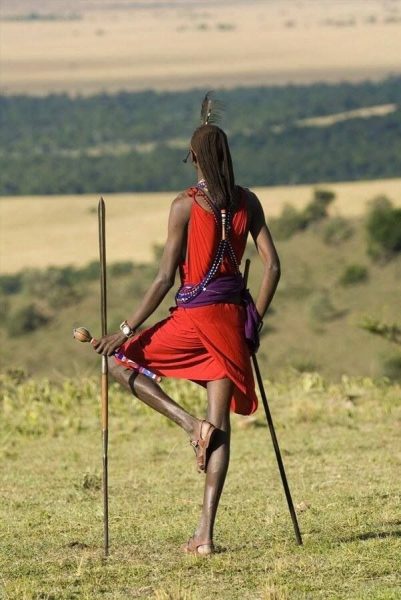
Travel To Kenya To Know More About Maasais
Maasai image
An image is that of a Maasai man standing tall and slender in stylish long ochre-dyed hair. They hook the right foot on the crook of the left knee. You can often seen this striking pose of a slender Maasai warrior in red standing on one leg in the savannahs of Kenya. They also wear red togas and sandals like that of the Romans. Hence the linking to the classical Roman soldier seems apt. They also sometimes jump in a trance-like state in one spot. To see this live, you need to travel to Kenya to know more about Maasais.
Land
Maasais live under a system that utilises resources such as land and water in a sustainable manner. The system allows everyone access to them. And each section manages it’s part. But droughts are severe in Kenya as a result of global warming. So, they ignore the section borders and graze their cattle throughout the land until the rains arrive. There are not many TV shows of the lives of Maasais. That is why it is important to travel to Kenya to know more about Maasais.
Houses
Maasai houses have several names such as manyatta, kraal and inkajijk. The houses are very impermanent in nature because Maasais are always on the move. They have relied on local technology and home-made materials to construct their houses. They arranged them in a circular fashion and share it with an extended family, but due to their land system, it is common to see a single family house. Timber poles fixed into the ground and woven with small branches form the framework. They plaster ash, mud, branches, grass, sticks, cow dung and urine on the walls. The houses are dark and smoky inside because they don’t have any windows or chimneys. For warmth, they spread animal skin on the floor. Within that space they cook, eat, socialise, sleep as well as store fuel, food and other household items. Make plans to travel to Kenya to know more about Maasais.
Entertainment
Maasai music has no instruments. They use grunting vocals of 2 different rhythms. The lead singer calls out something and the rest would repeat it. Maasai dancing is fun to watch. Singers stand in a line. Then each person jumps as high and as long as they can. The rest of the dancers pay close attention, others just giggle, and some others talk to their co-dancers while dancing. Let us know when you plan to travel to Kenya to know more about Maasais and Safari Center can take care of the rest.
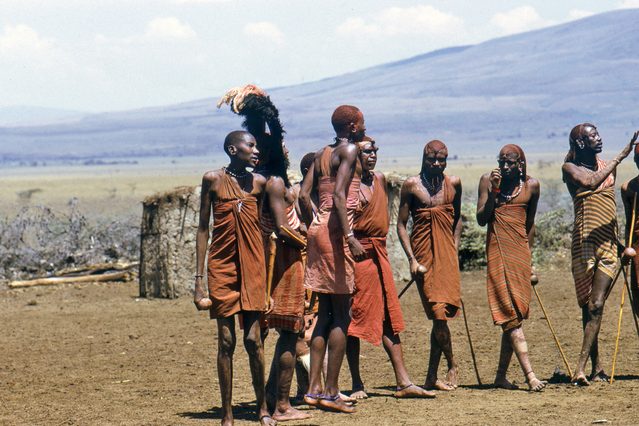
Travel To Kenya To Know More About Maasais
Men
Maasai menfolk are responsible for protecting the village and cattle. So, they erect circular fences made of acacia thorns for the security of the household. These fences keep wildlife outside the village and the cattle inside. Looking after the cattle needs constant care. Hence, males herd the cattle protecting them from predators as well as search for better pastures and watering holes. During droughts, both boys and men herding the cattle. Age-sets mark men for the rest of their lives. It is not easy to make out the age of Maasai men when you see them on TV. That is why you need to travel to Kenya to know more about Maasais
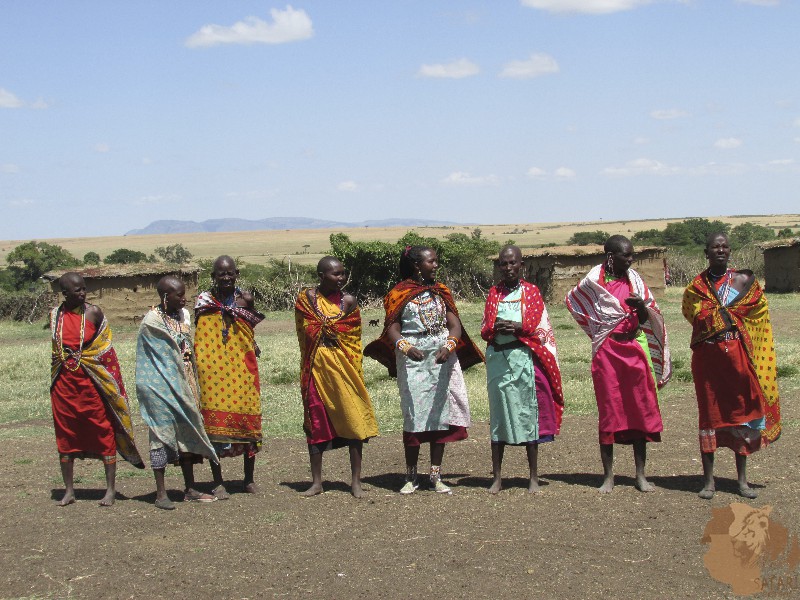
Travel To Kenya To Know More About Maasais
Women
According to Maasai culture, women are minors, but they play a role too. They cook, build houses, supply water, collect firewood, milk the cattle as well as make clothes and beaded jewellery. They teach the girls other roles until their parents find a husband for them. Maasai women go by the age-sets of their husbands. Maasai women are very shy. The only way you can see them if you arrange to travel to Kenya to know more about Maasais.
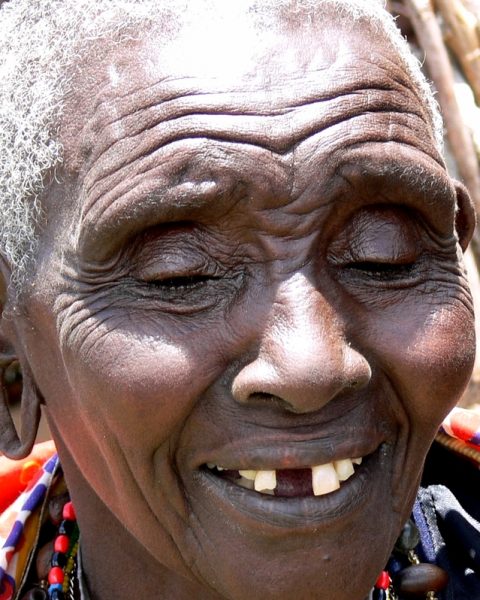
Travel To Kenya To Know More About Maasais
Elders
Another reason to travel to Kenya to know more about Maasais are the elders. Maasai society is patriarchal in nature. The elder male Maasais are advisors who make decisions about all matters in the community. Every morning, a senior who is the leader sits on his seat and prepares the schedule for everyone. Female elders tell the male elders about the village problems.
Laibon
Laibon is the leader and healer of Maasais who connects people to God and thus holds the main position. They act when something bad happens in the village. They also cure sicknesses using local plants. A laibon passes on the title to his son when he dies. Travel to Kenya to know more about Maasais and their spiritual journey.
Cattle
A Maasai’s entire life revolves around livestock. Cattle is everything for Maasais and provides almost everything they need. It plays a major role in their economy, social structure and religion. Legend has it that Maasais believe that God was once one among human beings until it split with the sky and that he gifted all the cattle in the world to Maasais by dropping the cows from the sky through the aerial roots of the fig tree. Since then God gave all the cows in the world to Maasais. Hence, they have a deep sense of entitlement of raising them. Therefore, Maasais consider livestock as their tribal asset. Moreover, cattle are their primary source of food, shelter and clothing. When you travel to Kenya to know more about Maasais we will show you around their pastureland to see how they herd their cattle.
Herding
Maasais are cattle-herders par excellence. They regard any pursuit other than herding as demeaning and insulting to God. Maasais associate cattle with land. Therefore, crop cultivation was totally unacceptable and frowned upon. They believed that it is a sin against nature because cultivated land is no longer suitable for cattle grazing. Neither would they break the ground to excavate water or bury the dead. Also, because of the great importance of grass that grows in the land, they move cattle herds from place to place so that grass has a chance to regrow. People passing the sacred fig tree honor it by placing grass among the roots. They also use grass for ceremonial occasions and to close gourd milk containers. Only visitors who travel to Kenya to know more about Maasais can see this.
Wealth
Maasais are one of the richest cattle-owning people in Africa. Cattle is the most valuable thing they own. They are a source of pride and a symbol of wealth. If they ever sold their stock, they would be the richest tribe. An average Maasai owns around 14 cattle. Rich Maasais would have more. Cattle herd size has been a way to distinguish the poor from the rich because it shows their status. Hence, accumulating them is a common practice. When you travel to Kenya to know more about Maasais, talk to them about their cattle. That would impress them.
Sacrifice
Maasais use their cattle for ritual reasons, in times of famine, as an offering during birth, death and when boys move up to manhood. Sacrifice symbolise people’s bond with God. Colour of cattle are important too.
Trade
Cattle change hands for all major trade. Maasais trade their livestock for cash, other livestock or livestock products. They trade cattle to create or strengthen loyalties and also as a symbol of their bond. Clans and families start close ties through the exchange of cattle. Maasais also use cattle as fine payments to restart cease-fire over fights.
Practical usages
Maasais use the cattle’s skin to make ropes, mats, slings, sandals, shoes, clothes, beds and sheaths. With its horns, they make pans. Out of the hooves and bones, they make curios. And with ribs, they make stirring sticks and spoons. Maasais people use the cow dung and urine for medical purposes.
Raids
Cattle has also marked Maasai’s nature of relations with their neighbours. They do cattle raids to assure the wellness of one’s family. They demand their rightful grazing and land rights. The attack also stirs the warrior’s ego and makes him an fit suitor.
Breed
Cattle do not belong to just one breed. They are quite a mixed bag because of the practice of cattle raids. As a result, their cattle are very diverse having likeness with the breeds of Nandi and Samburu. There is also some mixture with other blood. This includes hump size and horn shape. Maasais are very alert with their cattle and can detect them by their body shape and colour. They name them and can even detect each animal’s voice. They also use cuts on the ears of the cows to detect them.
Ceremonies
Maasai rituals which are an essential part of their culture. They symbolise it using beads, shields, dressings, markings and designs to convey various messages. Some ceremonies are intended for both women and men. Others are solely for either males or females. Female ceremonial rituals are mostly for their marriage. Each Maasai ritual is metaphorically a step toward God. Predominantly, the rites of passage are the most famous Maasai festivals and they take these traditional ceremonies very seriously, which happen at ritual villages. Houses as well as objects in these villages dictate the organization of space, shapes and colors that reproduce fundamental cosmological concepts.
Age set
Maasai ceremonies serve to mark their age-set classes of social system and political culture in the strictest form. But they do not distinguish age or time in the modern way. They approximate time to 14-year sections. And in between these years, they have a responsibility to defend the territory where they live.
1) Enkipaata
Enkipaata is a ceremony symbolising transition into the next age-set, prepared and organised by the father. It happens between 12 to 16 years of age and is the first coming of age initiation of a young Maasai boy. They paint his face with white chalk and shave his head. Then he moves towards the site of the operation. The male members shout words of encouragement along with threats and nasty looks. To a Maasai boy, Enkipaata means the end of his lowly societal status and the beginning of the much coveted warrior-hood subsequently leading to marriage. Therefore, he looks forward to this initiation rite.
2) Warrior-hood
All newly initiated men receive gifts of livestock from family for his new courage and respect from friends for his status. They praise him for his newfound responsibility and bravery. These warriors rank higher on a social scale. They accept the responsibility to secure the area in which they live. Circumcised Maasais wear black robes and ostrich feather headdresses for 8 months. After that the boys become warriors. Although his father remains his advisor, he can now move out of his father’s homestead and build his own family life.
3) Emuratare
One of the most important Maasai initiation is Emuratare elevating the boys from childhood to adulthood. Planning takes 4 months during which each will prove that he is ready by exhibiting signs of a grown-up, such as traveling by himself at night. For 7 consecutive days, the boy must herd livestock and bring them back home at dusk. On the 8th day, he has to stand outside in the cold weather. After that, he receives a cold shower to cleanse himself of past sins. The boys choose a chief who takes on the sins of the group.
4) Olomaylo
Junior Maasais have to carry out a very daunting and daring task called olomaylo to test how courageous they are. The task is to fight a lion and escape from it. However, in recent times due to wildlife endangerment reasons, the authorities have prohibited it. It was uncommon to allow outsiders to attend this ceremony.
5) Emanyatta
The next step is to form the Emanyatta selected randomly by a Maasai prophet, which is a warrior camp consisting of between 20 and 40 houses. One of the houses belongs to the prophet. The 10-day ritual takes place in this enclosure within the compound specifically built for the occasion. The site is considered to be a place where women are free to visit as they please. Hence, it is common for fights to break out and elevate quickly due to jealousy among them. A delegation of youth travels throughout this land portion for about 4 months, escorted by elders. Warriors must entertain the prophet with song and dance throughout the ceremony. The dance can become competitive. Men gather in a circle, and one by one will begin jumping, never letting the heels touch the ground. The higher the jumping, the more appeal he has to the young girls looking on. All the while, people forming the outer circle sing with pitches that go with the height of the jump. The dance is a tourist favorite. Foreigners capture it in countless videos, pictures and documentaries. In the middle of the compound is a pole. They tie the flags of Kenya and Maasai to it. It remains there as long as the warriors are still in the camp. Representing them are two Moran chiefs to lead and guide the warriors. They teach them animal husbandry and oratory skills. The boys sleep in the forest until the night before the final ceremony, which is called Eunoto.
6) Eunoto
At the dawn of the day of Eunoto, wearing loose clothing, the young Maasais run to their homestead with an aggressive new attitude and put on an act as if they have come to raid it. The horn of greater kudu is used to summon people for a whole day of singing and dancing which involves flirting. This initiation ceremony that usually lasts for 10 days takes place in the village chosen by the laibon. After 10 years of junior warriorhood, Maasai boys now become senior soldiers through this elaborate Eunoto ceremony which they hold once every 15 years. Eunoto ceremony marks the beginning of their acceptance into adult life, although for many it marks the end of their free time. The ceremony features singing in front of elder warriors. Then the warriors have their first sip of alcohol made out of fermented roots of aloe and honey. This ritual represents the release of his regenerative potentials. After that, they slaughter a specially chosen bullock and the leader drinks the blood from its neck. They eat the meat prepared by the women of the camp. The animal’s horn is set on fire, and each warrior is forced to take a piece before it is completely burnt. If they refuse to take the horn, the entire age-set will be cursed. After the ceremony, the warrior is allowed to drink milk for the 1st time since circumcision. Maasais consider milk as a potent symbol of procreation. The newly appointed warrior must marry immediately after the Eunoto ceremony.
7) Marriage
Marriage ceremony is the most important traditional custom in Maasai culture. The man does not choose his bride, but the fathers of the bride and bridegroom make the arrangement without the couple’s consultation. The groom is not allowed to see his wife before marriage. A meeting is held to agree on how many cows to pay by way of dowry. Although tradition constitutes the bride price, the number usually ranges between 5 and 15 cows. On the wedding day, the bridegroom and his best man travel to the bride’s hut. There they pay the dowry and pick her up. The bride’s family is not allowed to attend the marriage ceremony because she is no longer part of their family.
8) Shaving ceremony
A junior warrior jumps at the chance to graduate to senior warrior. The ochre-stained hair of the warriors participating in the ceremony is shaved off by their mothers while sitting on the very same cowhide on which the elders circumcised him. Shaving is a sign of their new designation as full-fledged warriors. It leaves him feeling ill at ease and shameful. They often weep while shaving because they hate to lose their sense of adventure and freedom for which the long hair is a symbol. Then they decorate the warrior’s head. They punish any warrior who violate taboos and laws. They perform the ceremony in a camp of 10 to 20 houses. During this ceremony, the soldiers eat the meat of a specially slaughtered bull that is prepared by women. At the end of the service, men and women fight with each other for the leftover food. The observance is full of wild celebrations and sacred rituals when they call upon their God.
9) Orngesherr
The last age set’s service is called Orngesherr performed in a selected camp of 20 or more houses. It marks the beginning of the transition of a junior elder to senior elder. The warrior status will be elevated to a more responsible elder. Early in the morning on the day of Orngesherr, the man will sit on an elder’s chair, and his oldest wife shaves off his head. The seat is kept throughout the rest of his life until it breaks off. If not broken within his lifetime, it is passed on to his son. As the day closes, he takes charge of warriorhood, and that completes the transition. After this ceremony, he becomes an elder and gains complete responsibility of his family. Orngesherr typically happens when he’s in his 30s.
Disengagement
In recent times, some Maasais have started to disengage from tradition because of western influence. Hence, it is becoming harder for Maasais to practice their old ways. Nevertheless, some traditional Maasais have been reluctant to adopt western ideas. They still remain in touch with their ceremonies as much as possible.
Global icon
Maasai is the most known Kenyan tribe, having grown into an icon of Kenya tourism and global fashion. Louis Vuitton has a line that includes Maasai hats, scarves, beach towels and duffle bags. There are currently 80 companies worldwide using Maasai image. It shows just how well-recognized the brand has become. For outsiders, it may seem nothing more than a fashion brand and decoration that enlivens their ceremonies. But for Maasais, they are symbolic and capture their entire world. Entering into Maasailand is taking a fascinating journey to a land full of symbols.
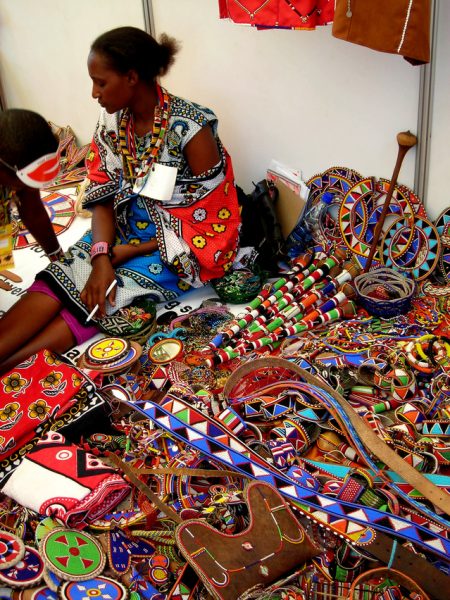
Travel To Kenya To Know More About Maasais
Beads
Maasai beads are symbolic to their culture. Jewelry made out of Maasai beads is one of the most popular items bought by visitors to Kenya. For hundreds of years, Maasais have handcrafted jewelry using beadwork. Before the arrival of Europeans to Kenya, they used items such as sticks, shells, grass, seeds and other materials as beads which look similar to Maasai beads of today. Maasai beadwork represents the whole of Maasai culture embodying beauty, strength, tradition, marriage, warriorhood, marital status, age set, social situation and their deep love for cattle. Also, beads play a significant role in the bodily ornamentation of Maasais. Males wear beaded bands on their ankles, wrists, waists and necks. Women wear colorful clothes decorated with beads. The most common feature is a flat and large disc necklace made of beads using cowhide strips. Many modern functional items are made using Maasai beads. The patterns and colors used in these collars indicate the wearer’s tastes. Each color of the beads represents a different aspect of their culture. For example, a black and white pattern shows that the wearer favors zebras. An orange color indicates her love of sunset. Yellow represents hospitality.
1) Red
For Maasais, red is the primary color and is considered sacred. Red means strength and bravery. They wear red blanket to protect themselves from predators. It represents blood symbolising bravery, unity, strength and their daily challenges.
2) Blue
Cows are revered by Maasais. Sky provides water for their livestock and people. So, blue being the color of clouds represents sky symbolising energy and sustenance, which has a strong connection to God.
3) Green
Green symbolizes plants. It represents fertility of land that provides food for livestock as well as protection of one’s territory.
4) Yellow
Yellow stands for sun which helps grow the grass for life sustenance and feed the livestock. It symbolises fertility, happiness, prosperity and growth.
5) White
White represents cow’s milk that provides sustained nourishment. Hence it is holy and symbolizes purity. It also represents health because of the nutrients it provides.
6) Black
Black shows the hardships of people symbolizing unity, solidarity and harmony. It represents the daily struggles of Maasais.
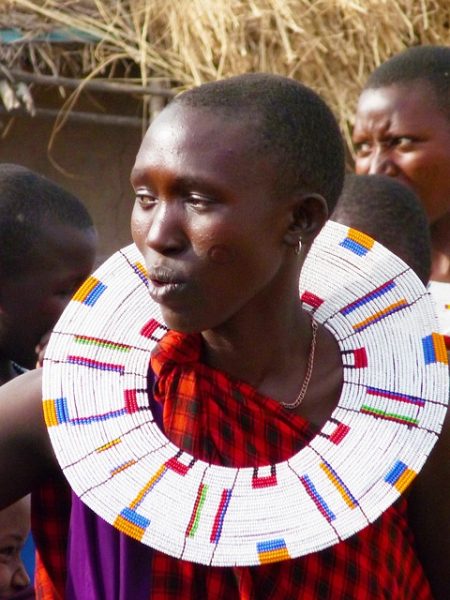
Travel To Kenya To Know More About Maasais
Collar
The mothers of girls who are about to get married make a distinct wedding necklace. It represents the map of the village. The collar is a large leather circle covered in brightly colored beads in geometric shapes with a square section in the front. The hole in the center represents the heart of the village where they keep the cattle, sheep and goats at night. There are also some beaded strings hanging from it which represent the dowry given by the groom to the bride. Dowry here is cattle. Cowry shells are attached to the bottom which is a symbol of peace. Plaited beadworks represent interconnection between the couple. Each and every part of the collar stands for some aspect of the bride’s community. Women wear similar beaded collars in ceremonies as a sign of beauty and wealth.
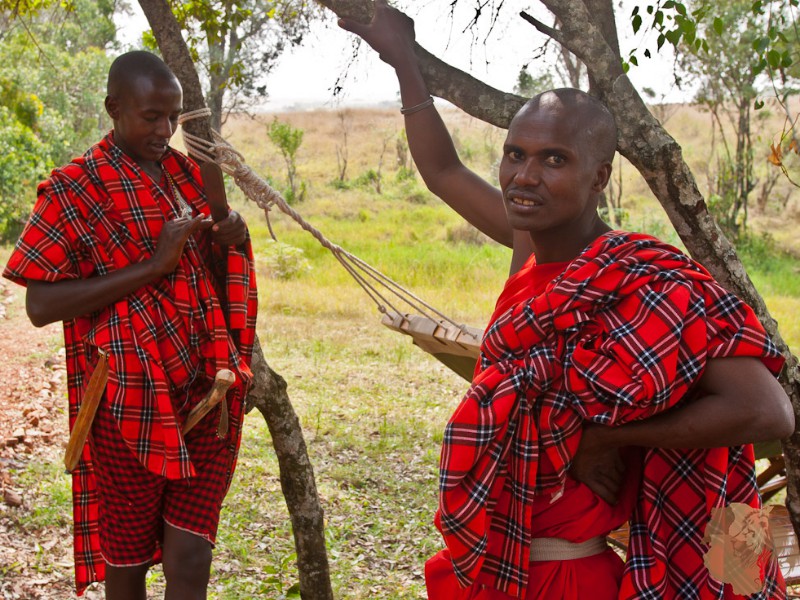
Travel To Kenya To Know More About Maasais
Shuka
In the olden days, Maasais wore leather garments made out of calf hides and sheepskin. They began to replace these clothes with more commercial materials in the 1960s. Since then, men wear a special red cotton fabric cloth called shuka. Also known as African blanket, Shuka is a red, blue and black striped cloth. They wrap them around the bodies. But the wearer, depending on his personal style, wears it in a variety of ways. It is said to be durable, thick and sturdy preventing Maasais from the harsh terrain of savannah. They believe that wearing red scares away predators. No one knows how shukas came into being. Some believe that they were introduced by Scottish missionaries. Interestingly, shuka does look like Scottish tartan with plaid patterns. These days it is manufactured in Dar es Salaam and China.
Dressing accessories
Stretching of earlobes is part of Maasai beauty. Both women and men wear metal hoops on their earlobes. Also, women remove two lower middle teeth. To show that a Maasai has killed another man he wears something called errap around his top arm. They make them using leather with metal wire coils in the front and back. If a Maasai kills a lion, he wears the lion’s mane as a headdress which is called Olawaru. But if the lion survives the fight, he wears a circlet called enkuwaru made of ostrich plumes. Maasai’s hair is a living symbol of their culture and tradition. Women and kids keep their hair shaved and short. Males wear them in red dyed braids. Those who wear plaits prove that they are true Moranis adhering to their traditions.
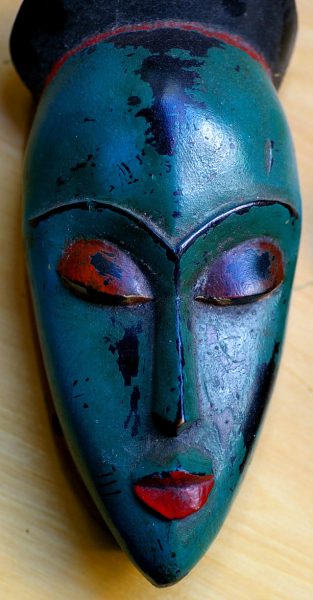
Masks
Masks are used in African culture to honor the ancestors, but Maasais use masks in traditional ceremonies such as celebrations, initiations and war preparations to scare their opponents. During such ceremonies, a Maasai member would enter into a deep trance who will then deliver a message from the spirit of an animal or a mythological being. The mask often represents spirits. The member communicates in groans, partial phrases or broken sentences. An elder or wise man usually serves as an interpreter. Today, modernism has done away with such traditional practices and ceremonies. They are often only practiced for tourists after which the masks are sold to provide a livelihood for the artisan or carver.
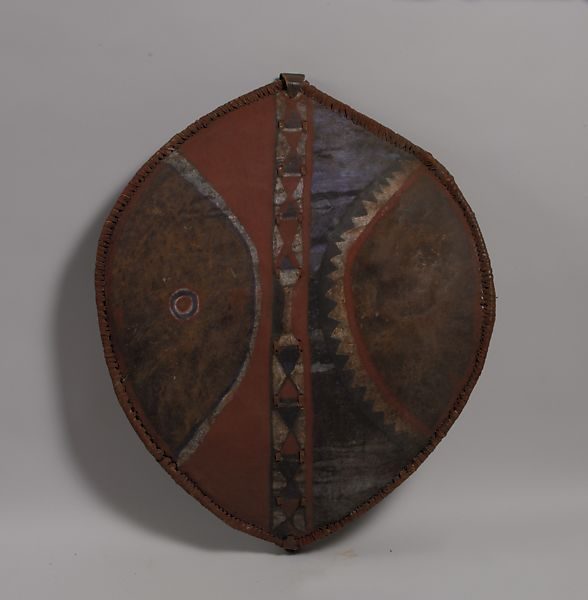
Shield
Maasais use shields primarily in defense against a lion’s or an enemy’s charge. But it also has a secondary significance. Shields express art and culture. They also function as symbols of identification and prestige objects. They are highly codified and indicate complex lineage identification system. Shields are given to a chosen successor strictly based on merit rather than birth. Markings on a shield convey the status and honor of its owner. Similarly, designs reveal many details about the bearer such as his prowess as a warrior. For example, a red badge signifies bravery in battle and is only painted with a high-ranking chief’s permission. Red shields are for mature warriors while the younger ones are only allowed gray, black or white shields. A white star indicates that the owner has committed an act of bravery.
Diet
Until recently, Maasais traditionally relied on livestock for most of their nutritional needs. Bulls, lamb and oxen are usually slaughtered during ceremonies. Although they do not often eat meat, they rely on cow’s blood and milk for protein needs. It is rich in cholesterol, which supplies two-thirds of their calories as well as massive amounts of iron, calcium and vitamin A. This way, they consume up to 2,000mg cholesterol a day. Interestingly, the recommendation of American heart association is to consume under 300mg a day. They also obtain salt from blood. This high-fat diet of fermented cow’s milk mixed with its blood is in the form of yogurt. Sometimes it is mixed with therapeutic bark soups. This is a unique tradition in Maasai culture because they believe that cow’s blood makes them strong. But it is not part of their daily diet. They reserve it for special occasions such as circumcision, birth, marriage and while recovering from an accident. Also, Maasais drink it to alleviate intoxication and hangovers.
1) Blood
Maasais extract blood as follows. Once a month, they take out blood from a cow’s jugular artery by tightening a noose around its neck so that it swells. Then at close range, one of them fires a blunt arrow from a loosely strung bow puncturing the vein in the loose flesh of the cow’s neck. They collect the blood in a gourd washed with urine. Bleeding is stopped with a wad of dung and mud. It may be drunk in coagulated form or tapped warm from cow’s throat. In recent times, consumption of blood is waning due to reduced number of livestock.
2) Milk
Maasais depend on milk for subsistence. Fresh or curdled milk is their staple diet. Half of the cattle herd belonging to a family are dairy cows. The other half feed the calves. So, the calves get a generous amount of milk. Hence, Maasai cattle are larger and in better condition than those belonging to the surrounding tribes.
Farming
Farming was frowned upon by Maasais until not too long ago because they believed that cultivation makes the land no longer suitable for livestock grazing. But due to population growth as well as shrinkage of grassland brought on by drought and climate change, Maasais no longer depend on livestock alone for food. They are forced to farm and have thus started cultivation as their secondary mode of subsistence despite the fact that traditionally farming was considered a sacrilege. Hence, farming has become prevalent since the 1990s. This lifestyle transition has resulted in some dietary changes as well. Maasais now include vegetables, corn, maize and millet in their diet with more regularity. These days they consume a kind of porridge, which is a mixture of cornmeal, milk, sugar and water. Other foods include rice, sorghum wheat, peanuts, beans, chapatti, peas, cabbage, kale, potato, cassava, dates, fruits, raisins and herbs. That makes the diet far richer in carbohydrates than before.
Healthy despite a high-fat diet
Maasai diet is rich in cholesterol and burn no more calories than sedentary urbanites. Hence, the walls of the red blood cells contain high levels of omega-3 fatty acids. However, unlike westerners, they show no signs of heart or lifestyle diseases associated with such foods and have excellent endurance. The level of cholesterol, gallstones, blood pressure and hypertension in their bodies is also very negligible. In other words, the consumption of unhealthy food seems to have no adverse impact on them. This has mystified health researchers around the world for decades because it is indeed a real miracle that they are in good health despite of such diet. Medical scientists often reference Maasais as evidence that low-carbohydrate and high-fat diet is not heart-damaging. Scientists have been greatly interested in these indigenous people from Kenya since cardio-vascular diseases started becoming a significant problem in the 60s.
Theories
It is not certain why Maasais do not succumb to the same health conditions as others despite a high-fat diet. Researchers and social scientists have attempted to do studies to find out the real reason behind this. The investigations took into account correlation between their diet and nomadic lifestyle. However, the findings of those studies have not been conclusive. There is a need for more research, studies, field experiments and debates to come to a more concrete conclusion. Nevertheless, the existing research has led to some theories and suggestions as to why Maasais continue to live healthy despite a high-fat diet.
1) Walking
Most people falsely assume that Maasais engage themselves in an athletic level of physical activity. But that’s not true. Instead, they spend most of the day walking several miles looking for greener pastures for their cattle when food and water run out. They rarely run. But when they walk, they move with a low and constant intensity. In other words, they are involved in a low-level aerobic activity. They get more exercise per day than an average modern person. If inactive urban dwellers were to get the same amount of physical activity, they would have to walk an extra 19km every day. Despite their unhealthy high-fat diet the regular walking may have been contributing to their healthy condition. This disparity may explain the health difference between westerners and Maasais.
2) Genetics
Taylor and Ho, 2 scientists, conducted a study in 1971 with two groups of Maasais. For 8 weeks, they fed both the groups calorie-rich food, but 1 group was given an extra 2 grams of cholesterol. After 8 weeks, the scientists discovered that both the groups had same level of cholesterol in their blood. It led them to believe that Maasais have some genetic traits that can tolerate large quantities of saturated fatty acids. They can drink milk without lactose intolerance. In other words, their biological mechanisms protect them from hypercholesteremia i.e. their genes limit the cholesterol-raising effects of their diet. However, the conclusion has no direct proof. For that, further studies identifying those genes under selection is necessary.
3) Short life
Researchers have noticed that for the kind of high-fat food that Maasais consume, there are a very limited number of deaths attributed to heart disease. A satisfactory explanation for that tends to be that they do not live as long as urbanites do and die of other causes. It implies that Maasais do not live long enough to be able to detect or diagnose any life diseases or heart problems.
Autopsy
Some early research found that the aorta of some Maasais had fibrosis. There was also clogging of arteries in people who had died of trauma implying that high cholesterol and high-fat diet isn’t healthy. But there were no heart attacks. Moreover, they had functional heart vessels. The obvious conclusion is that their good health could have a correlation to some other factors that have not yet been taken into consideration. Until and unless scientists establish that, let us continue to be baffled.
Challenges
For many Westerners, the fierce, proud, handsome and tall Maasais are the noble savage of Hollywood. Their daredevil attitude and nonchalant manner lead to the romanticizing notion that they are living at peace with nature. However, today Maasais face many political, economic and social challenges. Primarily, there are three types of challenges faced by these cattle herders in Kenya. First, a significant portion of their land has been taken away from them by greedy investors for commercial purposes without any compensation. Second, they have been compelled to cultivate the ground that was once considered sacrilege as they associate land to cattle. Third, they fear that their children are being forced to attend schools against their wishes. The 1st one leads to economic prosperity, the 2ndone leads to sustainable livelihood and the 3rd one leads to educated generation. Although at first glance, these interventions to bring about changes and help them integrate into modern society seems innocuous, Maasais feel that the government impose these changes on them without their consent. A deeper look into these factors may provide a better understanding of the issues.
Land grabbing
Maasais are notorious for routinely ignoring boundaries as they graze their cattle across the savanna. Therefore, large chunks of their land are taken by the government to create game reserves, private ranches, farms and wildlife parks because they reckon that Maasais keep too much cattle. This has drastically shrunk the grazing land of Maasais and reduced their territorial expansion in recent times. They are also prohibited from accessing resources. The depleting land ownership causes detrimental effects to their livestock by limiting adequate natural resources and grazing lands. Droughts have made the situation worse. Such restricted access to land usage and increased land encroachment threatens their traditional way of life. Consequently, the nomadic lifestyle of Maasais is beginning to change. Moreover, Maasais who have been living in this area for hundreds of years feel left out of the equation because they were not consulted. Although Maasais have demanded grazing and pasturing rights for their cattle, it seems like their requests have fallen on deaf ears.
Private ownership
Private ownership was a foreign concept to Maasais until 1980s when a program of commercializing land was forced on them by the government. Since then, their land has been subdivided and sold to private developers. Sure, this system has polarized the tribe, but many have also become extremely wealthy due to the sale of their plots to commercial developers. Despite the changes brought on by government intervention, Maasais keep having as many cows as possible. However, the plot sizes in the area that are left over to Maasais are not big enough to graze these increasing number of animals. So, less land and more cattle have led to overgrazing which in turn have resulted in environmental degradation.
Education
Since Kenya’s independence, school participation rate among Maasais have climbed dramatically because of less security in their traditional livelihood. Maasais now have grown to rely more on cultivation as their secondary mode of subsistence. Therefore, modern education has become a necessity not only for survival but also to remain competitive. However, senior Maasais reckon that academic studies are of use only to those involved in religion and politics. For others, they see few possible rewards for it and hence little reason for formal schooling. There is also an underlying fear among elder Maasais of losing their children to western schooling. However, over the years, the government has introduced projects and programs to help Maasai tribal leaders preserve their traditions while balancing the educational needs of their children to prepare them for modern world. With the arrival of formal schooling, herding of livestock has become the parents’ responsibility.
Change is coming
Since the 2nd half of the 20th century the richness of Maasai culture has been eroding rapidly. Many factors have contributed to this erosion, but government intervention and western influence have been the main culprits. As a result of the challenges faced by Maasais, there are many support groups and projects working to encourage Maasais to integrate into modern civilization. Non-governmental organizations work in collaboration with these groups to implement sustainable solutions for education, survival and growth through empowering Maasais by building upon their existing cultural context. Hence, their nomadic lifestyle is gradually giving way to urban ways. For example, more Maasais now are starting to build permanent homes. They have also grown dependent on other food products. The use of cattle blood in daily diet is also waning because of the reduction of livestock numbers. The net results have been positive or negative, depending on each one’s perspective. But the effects have inculcated an entrepreneurial spirit, afforded them a decent societal status and transformed them from nomads to urban dwellers. Today, Maasais have adapted modernity to their ancient system.
Modernity
Maasais have now become much more entrenched in modern economy. Livestock products are sold or exchanged outside Maasai community for beads, clothes, grains, uniform and school fees. With the Group ranch project of the 1980s it is now common to see Maasais in major cities and towns of Kenya selling modern products. Most Maasais work in the tourism sector where they exhibit their culture to visiting tourists. Some are even well educated and speak English. Because of the erosion of Maasai lifestyle brought on by western civilization, it is not uncommon to see many Maasais who have moved out of their homeland living in stationary shelters in the cities. They work in farms, businesses and even in public sectors holding responsible positions in the society. These days we see Maasais who lead urbanized lifestyle happily heading homewards in designer clothes, only to emerge from Maasai land wearing their shukas and cowhide sandals.
Culture erosion
Today, Maasai customs, rituals and cattle raiding have been outlawed. Government policies have made Maasai way of life increasingly difficult. At this point, the sustainability of their way of living is uncertain. Although Maasai culture is transforming, its beliefs and values remain strong. And despite education, civilization and western influences some stubbornly cling to nomadic pastoralism. They continue to honor their culture, traditions and history. Traditional Maasais continue to resist the government to adopt more modern ways of life. They routinely ignore international borders as they graze their cattle herd along the boundaries of Kenya and Tanzania. Consequently, adaptation to rapid economic and social change is the greatest challenge Maasais face. Sooner or later they would have to integrate into modern economy and political system.
Maasai politician and athlete
Maasais are not only traditional tribal herders but have proven to be great politicians and world-class athletes as well. Their aspiration to represent appropriately in the country’s governing classes is evident in Joseph Ole Lenku who vied for governorship position in the 2017 elections. Similarly, David Rudisha stands testimony to their exceptional athletic prowess. His march towards becoming the 3rd-time gold medalist for the 800m race at the 2020 Olympics is pretty commendable. Joseph Lenku’s and David Rudisha’s life stories are in direct contrast to the typical Maasai lifestyle. Their past achievements and future aspirations deserve applauds considering their backward upbringings. Truly, human beings’ awe-inspiring determination and unmistakable resilient nature is palpable even in the remotest corner of Kenya. Anyone fascinated with this nomadic tribe would be equally in awe of these 2 Maasai men and their backgrounds.
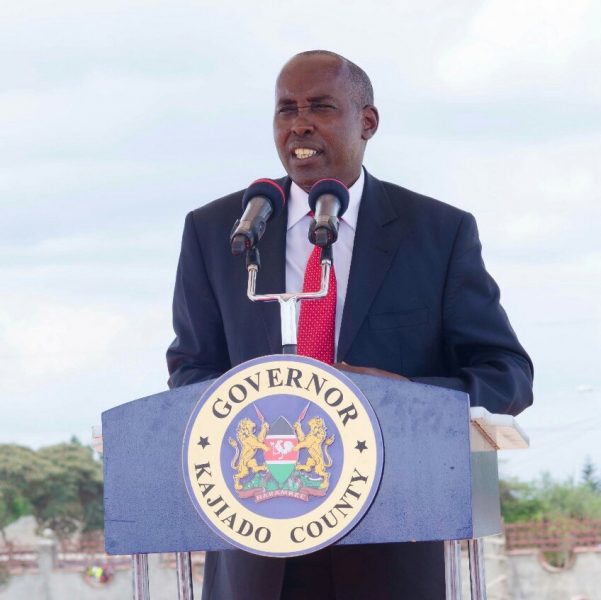
1) Joseph Ole Lenku
Joseph Ole Lenku was born in Kajiado county on the 20th of October 1970. Following the death of Kajiado south MP Geoffrey Mepukori in 2003, Ole Lenku vied for the seat but lost it to Katoo Ole Metito. Soon after, he resumed a corporate career in tourism and hospitality industry.
Politics
President Uhuru Kenyatta appointed Lenku as interior cabinet secretary on the 23rd of May 2013 becoming the 3rd minister to come from Kajiado county. During his tenure, he had a lot of challenges, but in the 1st year, he made significant changes to the sector, including a crackdown on drug trafficking, devolution of security, budget increase and police force reforms. In September 2013, soon after the Westgate mall terrorist attack, Lenku spearheaded the rolling out of a security framework called Nyumba Kumi anchored on community policing. It aimed to bring to the doorstep of the citizens the mandate to ensure their safety by knowing who their neighbours are as a security strategy. But there were repeated attacks in the country. Critics of Joseph Ole Lenku argued that he was not up to the task. They cited his lack of prior background in security affairs to demand his sacking. Subsequently he was sacked on the 2nd of December 2014. Lenku was the 1st to leave President Kenyatta’s cabinet. Ole Lenku vied for Kajiado county governorship post in the 2017 general election. He said that the area was suffering from poor leadership. Over 10 elected county assembly members and 200 elders drawn from at least 3 constituencies endorsed him as the preferred candidate for the seat. Later on, they accused Joseph Ole Lenku of inciting the youth during the Kajiado political campaign rallies.
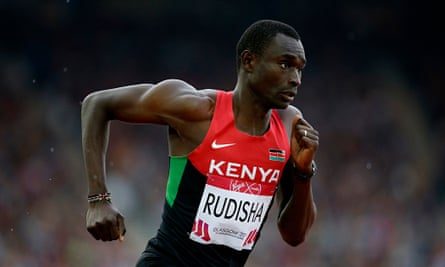
2) David Rudisha
Known as the king in Kenya, David Rudisha was born as a Maasai in Narok county, southwest of Kenya. Although a world-famous super sports star, he is known to be soft spoken and completely unassuming. His father, Daniel Rudisha, was a member of the men’s 4x400m team of Kenya and won a silver medal at the Mexico City olympics games in 1968. In 2006, David won his 1st international medal at the World junior championship in Beijing.
Accolades
The International association of athletics federation named him the male athlete of the year 2010. David Rudisha has continued to accumulate accolades and medals since then. He is a 2-time world and Olympic champion in the 2-lap event. He is the 1st and only athlete in history since Peter Snell of New Zealand in 1964 to hold the record of 1:40:91 for the 800m race. This sports star gave one of the most pulsating performances and won gold at the Olympic games 2012 in London. He ran against fellow Kenyans Ferguson Cheruiyot Rotich and Alfred Kipketer. Sadly, the stadium was just a quarter full to see for the 1st time a Kenyan retaining such an Olympic title. He gave the gold medal to his father Daniel and returned the favor because years ago his father gave his silver medal to a young David to inspire him. After the London olympics, David faced a series of injuries. Because of his knee injury, he couldn’t compete in IAAF world championship 2013. Rudisha is also a record holder in the 400m run. Besides, he holds 2 titles from Daegu and Beijing world championship in 2011 and 2015 respectively. In 2016, he won gold again for the 2nd time at the Rio Olympic games. He was adamant that it was his best achievement yet. David Rudisha is a great stoic. His upper body remains perfectly still when he runs. David’s face seldom betrays emotion even when the pressure is piling on.
Oral geneology
Travel to Kenya to more about Maasais. The past and early Maasai history are shrouded in mystery, myths and legends. They often pass on their traditional knowledge in the form of folktales, stories, songs, poetry and chants. Even Maasai symbolism is passed on orally through generations. They contain information about traditional medicine, landscape ecology, grazing practices, animal behavior, gathering of wild plant food and livestock management. Much of their early origins come from these vibrant oral traditions. Over time, this tribe has preserved their traditional ways and rich culture in part through oral genealogies earning them worldwide respect. Hence, there is a lack of written sources. All literature of their way of life are written by explorers and historians. Hence, these journals depict the lives of Maasais as seen from outside. Their origins are limited to our understanding of them from just the past few centuries.
Once a Maasai always a Maasai
According to archaeological record, Maasais left the lower Nile valley in the 16th century, traveling south through Kenya to central Tanzania, becoming the southernmost Maa speakers. They claimed a huge portion of rift valley and made their home in Maasailand over the course of 300 years, developing distinct dialects of Maa. Anthropologists call this area the cradle of mankind. It is not a wonder then that the admirers of Maasais portray them as a long-lost Jewish tribe who have continued to live their lives in peace with the wild nature. Maasai warriors became such a formidable force that even the invading Arab slave traders stayed away from them. In recent years, Maasai religious leaders have widely gotten a reputation as the best healers. Their knowledge of traditional healing has earned them respect because even as western medicine gains ground, people search out more orthodox remedies.
Evolution to modernity
Travel to Kenya to know more about Maasais. Powerful as they may be, Maasais faced its downfall towards the 19th century. The late 1800s was a particularly bad time for Maasais. They suffered massive losses due to drought, epidemics and starvation. Smallpox killed about two-thirds of the population taking a devastating toll on them. Rinderpest killed many wild animals and almost all their cattle. Also, in the 1870s, the Somalis captured some Maasais from the subgroup Kore. Along with the misfortune came the missionaries to coax them to change their primitive and savage habits. Eventually, they managed to convert a large number of Maasais to Christianity with a few old habits remaining. Moreover, treaties between Maasai and Kenya government broke up their land in the 1900s. They awarded half of the area near Mount Kilimanjaro to white farmers. Some other parts became parks and wildlife. And they confined the Maasais to smaller areas in their territory. But they still retain grazing rights in a few areas. With the loss of land, many Maasais had to find modern jobs to earn a living. Today they work as local tour guides, traditional dancers as well as hand-made beaded jewellery sellers. But they still hang on to their shukas, masks and religion that quintessentially serve as relics of their past.
To receive a colourful digibook about Maasai with videos, images and text, please fill out the following form or simply email us on safaris@safari-center.com

